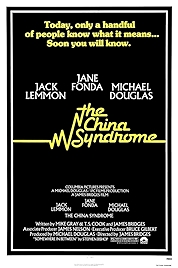A movie for every day of the year – a good one
10 October
Nuclear plant Windscale catches fire, 1957
On this day in 1957, the nuclear plant at Windscale in North West England caught fire.
Hastily conceived and built after the Second World War, Windscale was originally part of Britain’s attempt to build a nuclear bomb. At this point there was very little nuclear expertise in the world and Britain was definitely not in the vanguard. So the plant was poorly designed and badly maintained, leading to a fire in Pile 1 which burned away for 48 hours before anyone realised what was going on.
No one knew what to do. Do you call firefighters, with traditional water and hoses? In the event, and quite by chance, there was 25 tonnes of liquid carbon dioxide on hand, which the reactor manager and his co-workers attempted to use to smother the fire. But the fire was so hot that it stripped the oxygen from the CO2, and fed the fire, making things worse. By 11 October 11 tons of uranium were ablaze and the reactor was in danger of disintegrating. It was at this point that water was used. It made no difference.
Finally, it was decided to seal off all the cooling and ventilation inlets to the reactor, in an attempt to deprive the fire of oxygen. Slowly, it began to work. After another day, during which water was pumped in constantly, the fire was out. The reactor has remained sealed ever since.
The fire caused quantities of radioactive substances – notably iodine-131, caesium-137 and xenon-133 – to be released across Europe. Compared to the 1986 Chernobyl accident, Windscale was small fry – 740 terabecquerels (TBq) of iodine-131 were released at Windscale compared to 1,760,000 TBq at Chernobyl. There have been 99 accidents at nuclear plants since 1952 (“accidents” being defined as an event resulting in either loss of life or serious damage to property). Fifty six of them have been in the USA.
The China Syndrome (1979, dir: James Bridges)
You can’t buy publicity like this – 13 days after this film about an accident at a nuclear power plant hit the screens, one of the two nuclear reactors at Three Mile Island, Pennsylvania USA, had a partial meltdown, causing the worst accident in US commercial nuclear power plant history.
A sophisticated disaster movie in an era that had grown tired of the more simplistic ones (see Airport, Towering Inferno, The Poseidon Adventure and Earthquake), The China Syndrome goes long on drama and performance and short on shock and awe (though the title does refer to the possibility of an escape of nuclear material that could burn its way through the earth, all the way to China).
Jack Lemmon is the film’s star, playing a foreman at a nuclear plant who has suspicions that an earthquake has done dangerous things to a reactor, though no one will believe him. Also on the trail are Jane Fonda as an eye-candy journalist burning to cover the hard stories reserved for men and Michael Douglas as a cameraman with a countercultural bent and an inherent distrust of big business, their powerful lobbies and the PRs employed to bend the news.
The film more or less marks the end of Fonda’s “Hanoi Jane” anti-establishment period, re-asserted Lemmon’s claim to be just as good in straight drama as light comedy and confirmed Douglas’s position as a movie star as well as a TV face from The Streets of San Francisco. But it’s Lemmon’s film – his shift from complacent salaryman to concerned expert to panicky onlooker being what this film is all about.
Why Watch?
- A finger on the zeitgeist of the late 1970s
- A great example of a 1970s paranoid thriller
- George Jenkins’s chilling set design
- Jack Lemmon as an everyman waking up to how frightening the world has become
The China Syndrome – Watch it/buy it at Amazon
I am an Amazon affiliate
© Steve Morrissey 2013

